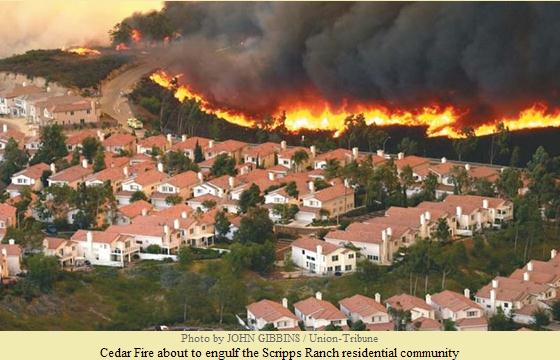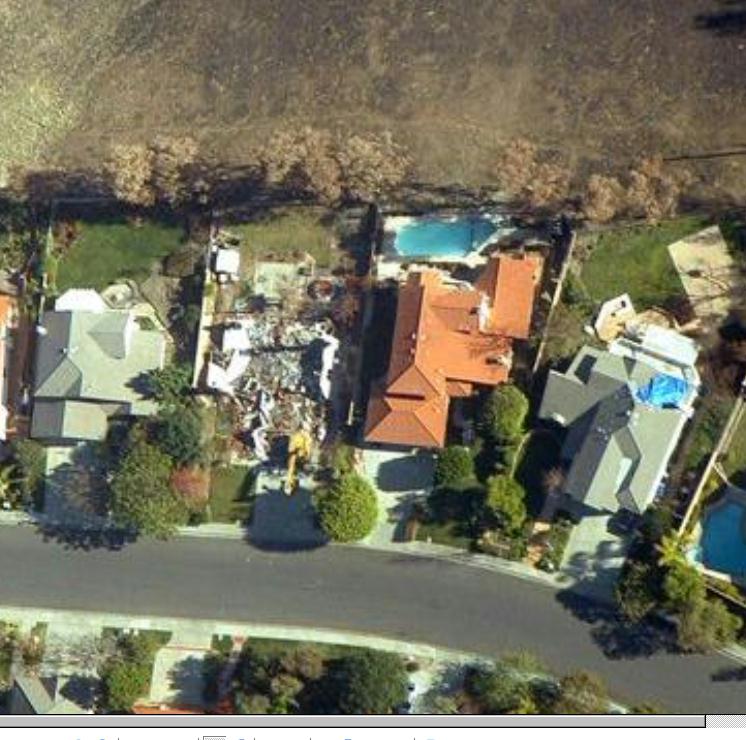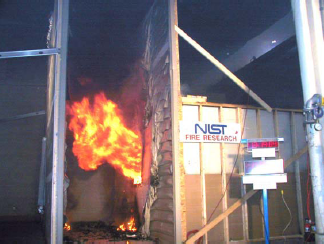Fire Spread Mecahnisms in the WUI
The Building and Fire Research Laboratory at the National Institute of Standands and Technology is seeking to better understand, from a fire safety point of view, fire behavior and structure ignition in the Wildland-Urban Interface (WUI). Fires in the WUI spread through both vegetative and structural fuels. Vegetative fuels can include those characteristic of wildlands (trees, grasses, understory growth, and ground litter) as well as those purchased at nurseries for home or community landscaping purposes (trees, mulch, grasses, and ornamental plants). Similary, a wide range of structural materials and designs are used in the construction of exterior walls, windows, soffits, eaves, decks, roofing assemblies, etc
Vegetation-to-vegetation fire spread : Fire spreading within vegetative fuels approaches a community.

Vegetation-to-structure fire spread : Fire spreading through vegetation in the upper part of the photo ignited a single structure.

Structure-to-structure fire spread : Fire Spread between structures due to direct flame contact.


